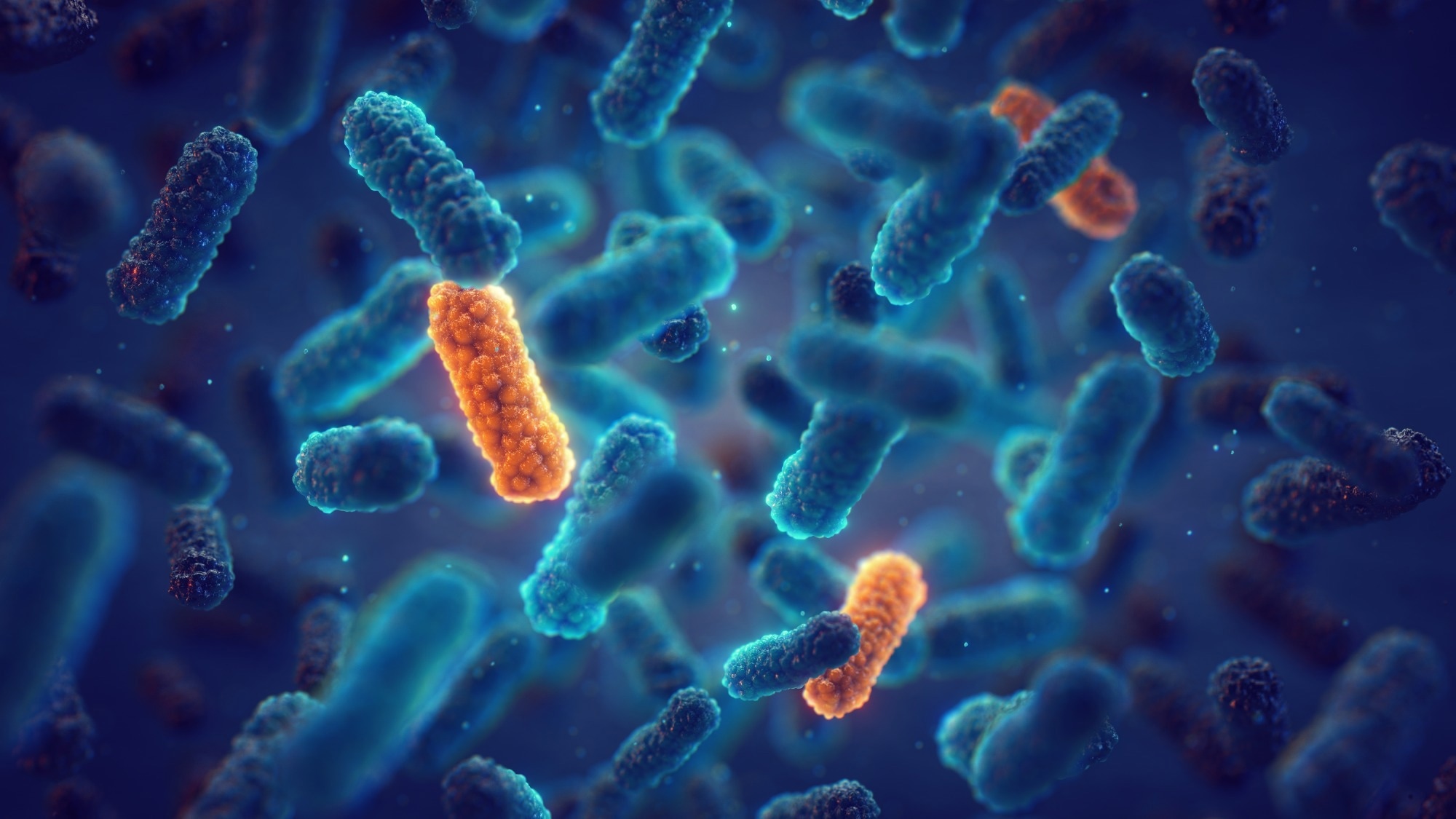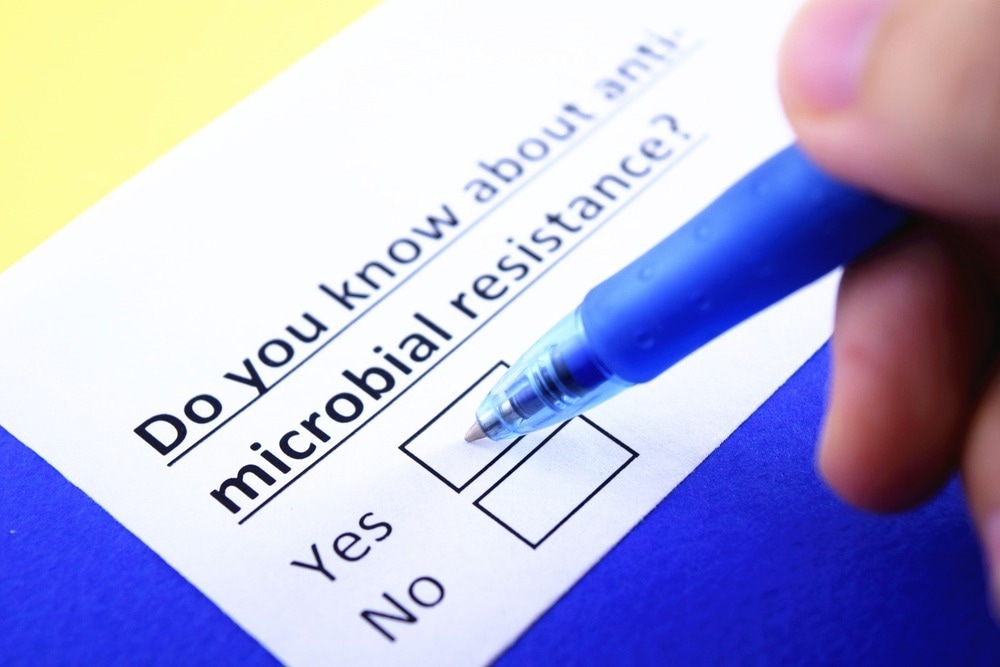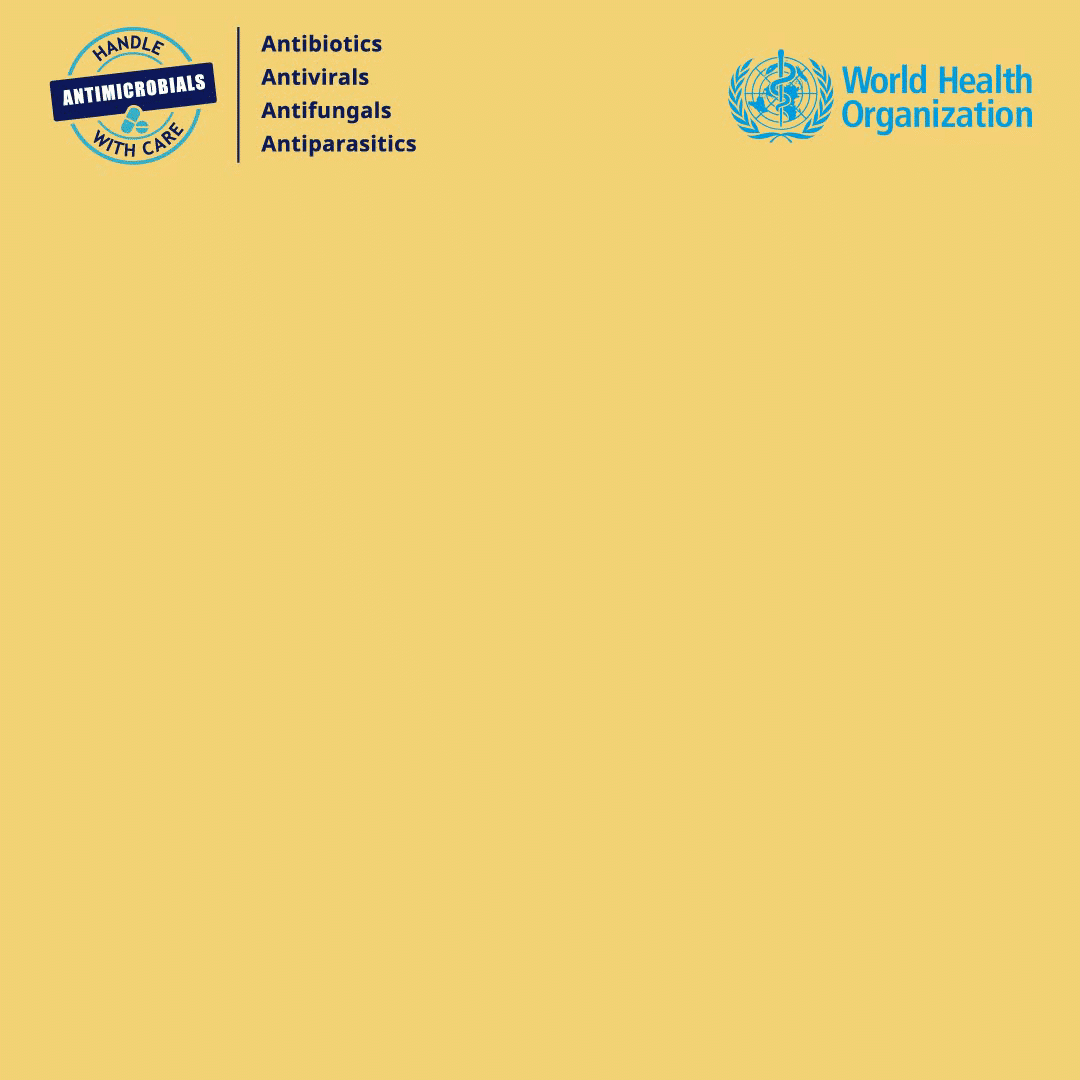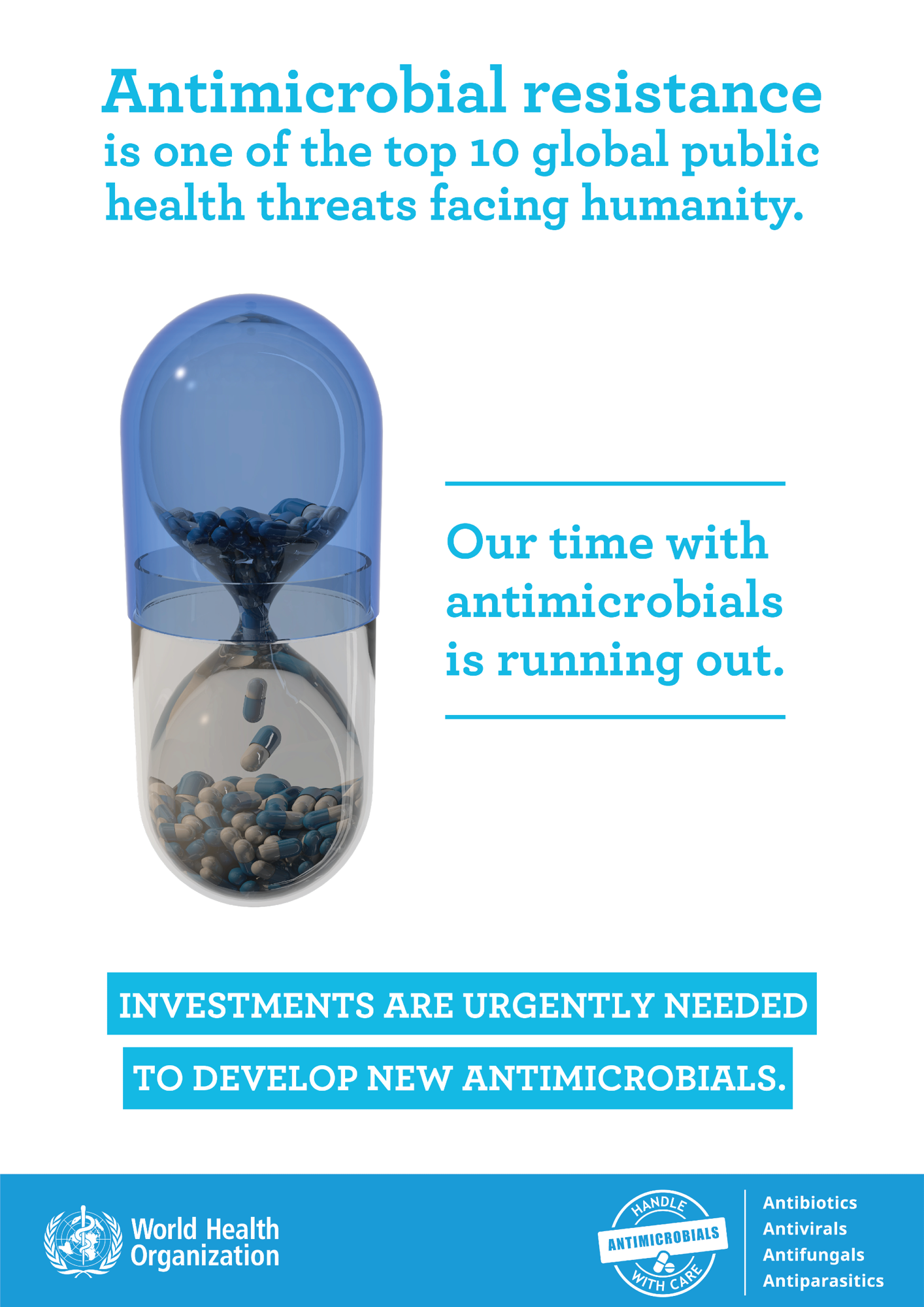I am an Infectious Disease doctor, working at the World Heath Organization (WHO) in Geneva, as Unit Head in the Antimicrobial Resistance (AMR) Division.
Antimicrobial resistance (AMR) is described as one of the top ten global health threats currently faced by humanity. Please could you give a brief overview into what AMR is and why it has been on the rise in the last decade?
Antimicrobial Resistance occurs when bacteria, viruses, fungi and parasites no longer respond to antimicrobial agents. As a result of drug resistance, antibiotics and other antimicrobial agents become ineffective, and infections become difficult or impossible to treat, increasing the risk of disease spread, severe illness, and death.
Antimicrobials are extremely efficacious medications that have made it easy for us to treat potentially deadly diseases such as pneumonia and meningitis. However, since the introduction of antimicrobials in the 1940s, we have been observing a steady rise in AMR, which has accelerated greatly over the last few years. The rise in AMR could be explained by several factors.
First, the misuse and overuse of antimicrobials, like the widespread practice of prescribing antibiotics (which are only effective against bacteria) to treat viral infections, or the indiscriminate use of antibiotics in livestock as growth promoters, has selected out strains of microorganisms that are naturally resistant to those antimicrobials. Second, inadequate practices to prevent and control infections has resulted in the spread of these resistant microorganisms across populations. Third, we have a limited arsenal of tests to diagnose infections – most laboratories, even those in well-resourced settings, rely on the same techniques of 150 years ago, and these are slow and cumbersome – and are simply not available in less well-resourced settings. This has resulted in the AMR problem to grow unnoticed – indeed, it has been called the “silent pandemic”.
Early and accurate diagnosis is vital to helping individual patients, preventing the spread of resistant organisms to other patients, and providing policymakers with an up-to-date and reliable snapshot of AMR trends. Other factors contributing to the rise of AMR include lack of regulation and proper guidelines, limited vaccination coverage, and limited knowledge and awareness of AMR.

Image Credit: nobeastsofierce/Shutterstock.com
AMR leads to an increased number of deaths yearly, with bacterial AMR directly causing an estimated 1.27 million in 2019 alone. On top of this, what are some of the other wider implications resistance has on both human health and the future of new medicines?
The treatment of infections with resistant organisms is more difficult and complex than that for more susceptible organisms. It often requires more expensive, frequently toxic medications that are challenging to administer and not available in less well-resourced settings. Patients with resistant organisms incur higher healthcare costs due to prolonged or repeated hospital stays and other complications. This results in a loss of revenue for the individual as well as decreased productivity. Collectively, this could have widespread economic impact.
Recent advances in medicine include life-saving procedures such as organ transplantation, specialized surgery, and chemotherapy. However, patients undergoing these procedures are prone to the development of infections for which antimicrobials are essential, and drug-resistant infections in these patients can be disastrous. In this way, AMR threatens to undermine our progress in treating other important diseases, such as cancer and cardiovascular disease.
Novel classes of antibiotics are critically needed to stay ahead of resistant bacteria. Unfortunately, there has been a void in the discovery of drugs. The development of newer antibiotics is often prohibitively expensive and takes many years. Pharmaceutical companies are not incentivized to pursue the discovery and development of new antimicrobials due to the rapid emergence of resistance once the new antimicrobial is introduced.
To help tackle AMR, many initiatives have been put in place to improve communication, education, and training. How will improved education surrounding AMR help to reduce its spread, and what more should policymakers be doing to help raise awareness?
People need to be aware of and understand AMR and, more importantly, how it affects them before they can do something about it, and therefore education and raising awareness is the starting point.
AMR is a complicated field; the level of awareness and understanding among stakeholders, even among health professionals, is still quite low compared to the magnitude and urgency of the problem.
Creating awareness is also a critical step to changing behavior around the inappropriate use of antimicrobial medicines. Through education, we can promote best practices to preserve this precious resource. For example, consumers should be made aware of the potentially harmful effects of inappropriate antibiotics, which will empower them to make informed healthcare choices. Practitioners in the human health, animal health, and environmental sectors can be guided on the rationale use of antibiotics through the development and dissemination of guidelines. WHO offers guidance supporting antibiotic stewardship and the rational use of these precious drugs.
Policymakers can play an important role in various aspects. They can promote the inclusion of AMR topics into school curricula so that children learn about and become aware of AMR from an early age. This will have a long-term impact on mitigating AMR. Policymakers can put an appropriate policy in place, engage various stakeholders, and ensure accountability. They should allocate resources and put systems in place to translate the policies into action on the ground.

Image Credit: Yeexin Richelle/Shutterstock.com
The COVID-19 pandemic also proved that when there is a high level of international collaboration, medical advancements can be made quickly, as seen with the vaccine. How could we take lessons learned from the COVID-19 pandemic to help fight AMR?
As with COVID-19, AMR does not respect any borders. International collaborations are key to success in the fight against AMR. Different solutions to curb AMR depend on global coordination.
There is a need for global epidemiological data to inform research and innovations in vaccines, medications, and easy-to-use, affordable diagnostics. During COVID-19, timely updates and sharing of critical data helped researchers tailor their research questions appropriately and guide interventions.
Advanced diagnostics is one of the drawbacks in fighting AMR, as testing for AMR has many limitations. However, existing diagnostic networks and facilities put in place during the pandemic could be leveraged and adapted to address AMR diagnosis. During the COVID-19 pandemic, regional and global networks actively collaborated in detecting and discovering new variants of the virus. This guided the need for new control measures, including vaccine development.
Every year, you and your partners at the FAO, UNEP, and WOAH celebrate World Antimicrobial Awareness Week (WAAW). How does having a week dedicated solely to raising awareness help reach global audiences and encourage collaboration?
The week of 18 – 24 November is dedicated to drawing global attention to AMR. It is an opportunity to raise AMR to a globally recognized issue across different sectors. Stakeholders around the world get more momentum during WAAW to undertake activities on AMR and reach out to broader audiences, including the general public. Various promotional and educational resources are developed and disseminated during the commemoration of the week.
Several platforms, events, and activities are organized at different levels to raise awareness among the public, policymakers, and other stakeholders. Of course, this work should go beyond that week and be done on a continuous basis year-round.
The theme for this year is 'Preventing Antimicrobial Resistance Together'. With the COVID-19 pandemic highlighting the importance of using a multisectoral approach when tackling emerging health threats, what is the importance of this message?
Yes, the joint cross-sectoral theme agreed upon by Quadripartite (WHO, WHOAH, FAO, and UNEP) for this year's WAAW is “Preventing Antimicrobial Resistance Together”. It calls for cross-sectoral collaboration in the fight against AMR. The theme also emphasizes the role that prevention of infection plays in curbing AMR. Preventing infections also means preventing drug-resistant infections. Strengthening infection prevention and control in health care facilities, farms, and food industry premises, ensuring access to vaccines, clean water, sanitation and hygiene, and other prevention measures play an important role to reduce the need for antimicrobials and minimizing the spread of AMR.
The COVID-19 pandemic has shown the importance of collaboration and cooperation between multiple sectors. It has brought increased attention to infection prevention through clean environments and sanitation, hand hygiene, using personal protective equipment like face masks, as well as vaccination. These initiatives are just as essential to preventing the spread of AMR as they are to preventing COVID-19.

Image Credit: World Health Organization
Do you believe that if we saw all sectors coming together through a 'One Health' approach, we would see a reduction in the emergence and spread of AMR? What would this mean for human, animal, and environmental health?
AMR is a complex problem affecting human, animal, plant, and environmental health and is driven by antimicrobial usage across the various sectors. It, therefore, requires a united response from all sectors through multidisciplinary engagement and collaboration and a shared vision of better health for all, which is the core of the “One Health” approach. The quadripartite collaboration between the four organizations, WHO, WHOAH, FAO, and UNEP, provides an example of efforts to fight AMR in a coordinated and collaborative fashion.
Concrete joint efforts could include mobilizing funds for action, sharing evidence, data, and knowledge, and developing policy, advocacy measures, and legislation which can lead to cumulative success. Urgent and sustained action is required from all responsible actors, including at the regional and country level, to reverse the tide of AMR.
What would you say to people who want to get involved with WAAW and help raise awareness surrounding this global health threat?
I would encourage everyone to get involved and participate in WAAW. AMR is everybody's business, and everyone has a role to play. There are various opportunities to participate in the campaign.
Start by visiting the WHO campaign website to get information and ideas on how to support the campaign: https://www.who.int/campaigns/world-antimicrobial-awareness-week/2022. There are many ways to participate in and develop local activities, and our WAAW 2022 campaign guide offers ideas to increase AMR awareness (https://www.who.int/publications/m/item/world-antimicrobial-awareness-week-2022---campaign-guide). Contribute by disseminating these resources to your network. Reach out to your local AMR champion or coordinator and explore opportunities for contribution and collaboration. Work with your local school administration to hold a special school assembly on AMR. Reach out to the media and share key messages through your participation in talk shows, panel discussions, and media briefings.
Join the Go Blue for AMR campaign. There are multiple ways of joining the campaign. Start with something this year and take it forward!

Image Credit: World Health Organization
What is next for you and your work in global health? Are you involved in any exciting upcoming projects?
There are still many knowledge gaps that need to be addressed to make significant global progress in mitigating AMR. Gaps include the burden and the drivers of resistant infections, particularly in low and middle-income countries, the implementation of cost-effective interventions, the best way to deliver these interventions in a way that they are patient-centered, and the discovery of new tools, both for the diagnosis and the treatment of resistant infections.
With the support of many policymakers and experts from all over the world, we are coordinating the development of a global priority research agenda for AMR. We believe this work will catalyze the interest and engagement of researchers and funders to address priority research questions of public health importance. We hope this initiative will contribute to making significant progress in our fights against AMR.
WHO also recognizes that the diagnostic capacity to identify bacterial infections and fungal infections, including resistant pathogens, is limited in low-resource settings. We are working on a new WHO AMR Diagnostic Initiative, which aims to bring laboratory strengthening and investment in diagnostics at the center of the global AMR response.
Where can readers find more information?
About Silvia Bertagnolio
I am a physician and ID doctor, and I am currently the Unit Head in the Antimicrobial Resistance Division, at the World Heath Organization in Geneva. At WHO, I am also leading the Global Clinical Platform for COVID19, a global repository of anonymyzed clinical data of patients hospitalised for COVID-19, that supports the generation of evidence based public health responses to COVID-19.
Previous to this, for almost 20 years I led the HIV Drug Resistance (HIVDR) programme at WHO in Geneva. In that role, I coordinated the development of global strategies and policies on HIVDR, the monitoring of HIVDR emergence and trends in over 50 low- and middle-income countries, and the establishment of the Global WHO HIVDR Laboratory Network.
I hold an academic affiliation with UCL, London, and published over 100 peer-reviewed papers and book chapters.